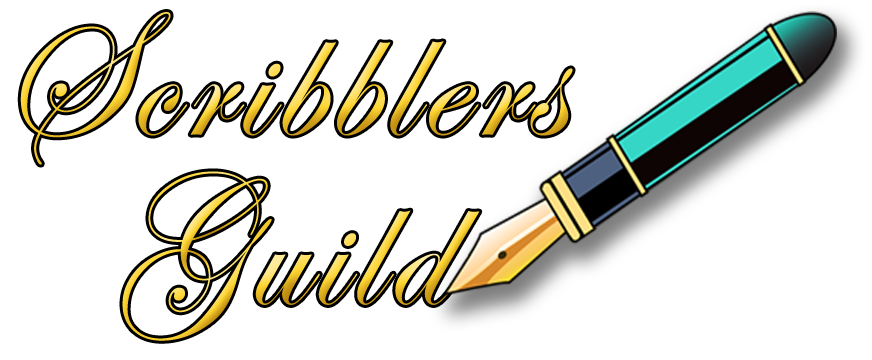Think Big, But Write Small

There’s an overall shape to a book-length story that we’ve come to expect — certain elements fall into certain places at certain times during the course of the story, and we’ve learned, even if subconsciously, to anticipate this underlying structure.
Everything in a story is connected.
Think of your book as a fractal. This may help you stay on track with the multitude of ideas and abstract concepts that go into a book that’s as introspective as a memoir.
![]()
Six Elements
1. Story — A memoir is a story built around one main idea, theme or point.
2. Chapters — Within a story, there may be several chapters, though not every story has them. Each chapter has a similar conceptual structure as a memoir — that is, one main idea that’s an exploration of one aspect of the main story point, but on a smaller scale. It still requires the same elements in much the same order as the book as a whole.
3. Scenes — Within each chapter, you have several scenes — again, same elements, but not as complex. Each scene is basically one idea illustrated by one or more memories, usually an emotional response, action or reaction, conclusion or result. Make each scene a mini-story that relates to the chapter that contains it.
4. Paragraphs — Every paragraph has its own premise that relates back to the scene that contains it.
5. Sentences — A sentence arranges words to make up one idea that relates to the paragraph that contains it.
6. Words — Your word choice defines an idea with exquisite precision.
For the purposes of this article, I’ll be using the collective term “elements” to refer to stories, chapters, scenes, paragraphs, sentences and words.
![]()
The Controlling Idea

So, let’s break this down a little more.
First, you have your memoir. It’s not your whole life’s story. It’s a collection of related events that make up a story with a single theme or point. Sometimes it’s a message, a moral, sometimes an adventure, sometimes a kind of self-help manual written to help others in a similar predicament to the one you’ve overcome.
Author/editor Donald Maass says,
“Theme is frequently mentioned but mostly vaguely understood. It’s a point. A lesson. An instruction, in a way, for what’s wrong, how to fix that, or how we should live better. A novel’s theme points out something we must heed about ourselves and our world.“
Your memoir is based on one Big Controlling Idea and like all big ideas, it’s made up of a collection of smaller ideas that comprise the whole, so it helps to think of your memoir (or novel, or non-fiction story) as a fractal. The construction of each element of your overall story mirrors the construction of the elements above and below it in size.
It can also help to think of the story as a hierarchy.

1. There’s the top tier — the story, which is built around the main controlling idea or theme, using the events and trajectory of the story to convey this big idea to the reader.
2. The second tier is the chapters, each of which has its own main idea that relates back to the main theme.
3. The third tier is all the different scenes that combined, make up each chapter.
4. The fourth tier is the paragraphs that make up the scenes.
5. The fifth is sentences that build the paragraphs.
6. The sixth is the individual words.
Each of these elements has one controlling idea, and that controlling idea is made up of three components:
![]()
Three Components — Purpose, Change and Question

Your main job as a writer is keeping your reader’s interest and attention. In order to do that, you must keep all elements of your story congruent with each other.
Each chapter, scene, paragraph, sentence and word requires three components for it to be congruent within the main story. Without them, the story can become scattered and disjointed, and eventually the reader loses track of where the story is going, so he loses interest and ultimately quits reading.
![]()
1. Purpose/Significance/Meaning
Every element — every chapter, scene, paragraph, etc. has a point — one key idea or concept to keep in mind as you write.
- Why is it necessary?
- What is the point you’re trying to make?
- What is the idea, insight, concept, message, theme, lesson?
- What is its significance to the overall story theme?
- What does it mean to the protagonist?
- To the opposition?
- To other characters?
- To the story trajectory?
The key point of the element above it in the hierarchy determines the relevance of the key point of the element you’re writing. You need to know the controlling idea of the larger element, so you can keep the next smaller element on topic.
Remember, it’s “think big, but write small”.
- What is the Big Controlling Idea of the story?
- If you’re writing a chapter, how does it relate to the story’s key point or theme?
- If you’re writing a scene, what’s the controlling idea of the chapter it’s found in? Any scene that doesn’t fit that idea doesn’t go into the chapter (though it may fit in elsewhere).
- If you’re writing a paragraph, what’s the controlling idea of the scene it’s in? Once again, the scene’s point determines what that paragraph is about.
- If you’re writing a sentence, what is the controlling idea of the paragraph that contains it? The paragraph’s key point determines the content of the sentences within it.
- If you’re choosing a word, and especially a verb that describes action, what is the key idea in the sentence that contains it?
Writers get lost or blocked when they veer off the main point of the story and off the point of the element above it.
For example:
 You want to write a memoir about how you learned to forgive after a life-altering betrayal by someone you trusted. (The Big Controlling Idea is “letting go of hatred and resentment and learning to move on.)
You want to write a memoir about how you learned to forgive after a life-altering betrayal by someone you trusted. (The Big Controlling Idea is “letting go of hatred and resentment and learning to move on.)
You’re writing a chapter about the development of the relationship between the protagonist (you) and your best friend, but you don’t know at this point in the story that your friend will betray you. Just for fun, you throw in a scene about your friend’s cat because it’s interesting or amusing.
If the cat scene never affects anything or anyone either before or after this scene, and never reveals information about the plot or characters, it has no relevance. You’ll confuse your reader, because they’ll expect to see more about the cat. This scene doesn’t refer back to the chapter’s controlling idea, (“the development of the relationship between the two characters”) and thus to the overall story (“letting go”).
Unless the cat scene somehow contributes to the plot, or reveals something about one of the characters, the only time to include this type of irrelevant detail is when you are deliberately misleading the reader, such as inserting red herring clues in a mystery, using an unreliable narrator, keeping secrets or conveying misguided character beliefs.
An element is included only if it contributes to the Big Controlling Idea.
Same with a brilliant line of dialogue that’s out of character for the person speaking it, or a word that doesn’t quite describe precisely what you mean. Every part of your story needs to be congruent with every other.
This is why it’s important to begin thinking about your theme, your Big Controlling Idea, right from the start, because when you’re clear about what that is, you’ll be much better able to keep the work consistent and prevent yourself from wandering off-track. By keeping to the point of each element, you’ll be a much better writer.
![]()
2. Change
We often talk about conflict in our stories, but the term “conflict” is confusing because it brings to mind car chases, fistfights and epic battles to the death, but it’s not always necessary to have direct opposition to the character’s goal in order to create drama and suspense.
What’s needed isn’t always conflict. What’s needed is change.

A simple change in direction, new information, a realization, the introduction of another character, or new thought or memory can bring about a whole new scenario.
Every one of our elements requires a change of some kind. A static scene serves no purpose because without change the story has no drama. Likewise, a repetitive, static sentence. Each scene, paragraph or sentence has to contribute to the whole. It must create or reinforce a change of some kind that is necessary to the resolution of the Big Controlling Idea.
Change can come in many guises — information, description that adds to reader comprehension, character development, conflict, revelation, new goals/desires/wants, sudden insights, recollections, pivotal conversations, discoveries, introduction of new characters or surprise twists. Anything which creates a change in the character’s circumstances can be used to further the plot.
The possibilities are endless. Their only consistent requirement is that they change the story trajectory in some way and the events of the scene either move the character forward towards his goal or away from it. On the smaller levels, word, sentence, paragraph, the change may be unnoticeable to the reader’s conscious awareness, but they respond to it subconsciously.
- What changes?
- Positive change or negative change?
- Is it a situation or a character?
- What’s different as a result?
- What does this element change for the protagonist?
- For other characters?
- For the opposition?
- For the reader?
- If this change were left out, would the story be missing an important piece?
- Is this change in the right place?
- Is it told by the right character or point of view?
- How does it advance the plot or establish atmosphere?
- How does it change or develop character?
- Could it be revealed in a different way that is more dramatic or has more impact?
Make sure that each of your elements changes something — action, additional information or description, story trajectory, reader comprehension, protagonist’s belief, understanding or relationship to other characters or his world. Changes can be obvious or extremely subtle, but something must change, relative to the Controlling Story Idea. If it doesn’t, leave it out.
3. Questions
Readers read to be entertained and/or informed.
Stories provide entertainment by keeping readers curious, on edge and anticipating change. They do this by providing suspense, which in turn creates tension in the reader, a need to know what’s going to happen next.
To establish questions for each element, you need to know:
- What point do you want to make?
- How do you want your reader to react?
- What emotion do you want them to feel?
- What beliefs do you want them to question?
- What values do you want to reinforce?
The answer to the main story question is what the reader wants. The answer to the main story problem is what the protagonist wants.
![]()
Story question: Every good story has one main underlying story question based on the story’s main problem or conflict. The conflict may be external — will the hero escape from a war zone? Or it may be internal — does the hero abandon his dying friend or does he stay with her to the end and maybe lose his own life?
Internal conflict can be an emotional dilemma, a prejudice or belief that needs to change so the character can heal, an ethical rock and a hard place. The best stories use external conflict to agitate internal conflict.
Along the way, several secondary questions related to the main question are asked and answered. Writers build suspense by opening these story loops and leaving them unanswered until exactly the right time in the story. When you close one of these open loops, the reader feels a sense of satisfaction, an actual dopamine hit. When you leave them open, it creates an ongoing feeling of micro-tension in the reader, an anticipation that keeps him reading to find out what happens next.
Each of our six elements can use this question technique to heighten suspense.
The story question should be established early on, certainly in the first chapter, sometimes even in the first few sentences, piquing the reader’s curiosity. The main story question isn’t answered until very near the end.
In order to solve the main story problem, the protagonist needs to do something, find something, change something, fix something or prevent something. To do so, he needs to be changed or transformed across the arc of the story. The story question centres on his ability or inability to do that.
![]()
Chapter question: Each chapter could pose a new problem or conundrum. Chapters often end with a cliffhanger. These chapter questions are larger pieces of the main puzzle, each based on component problems and issues that make up the main story problem.
Like the story question, chapter questions each have an answer which must be revealed at some point, though not necessarily by the end of that chapter. They may be answered right away in the following chapter or delayed for several scenes or chapters before being resolved.
It’s a good idea to keep a notebook handy with each of these story, chapter and scene questions listed so that you don’t forget to close those loops. Writing a memoir can take a long time and we don’t always remember what we’ve written, especially if we wrote it weeks, months or years ago.
![]()
Scene question: Every scene needs to pose a question as well. It might be a character needing to get from one point to another, or it might be a letter that’s expected to arrive, a missing item, a preparation or plan, or a mistake.  The question can often be a gap between what the character wants in the moment and what he gets, or it could be a decision or choice he must make.
The question can often be a gap between what the character wants in the moment and what he gets, or it could be a decision or choice he must make.
A scene’s events, character thoughts and dialogue should be all about solving the story problem for the character and answering the story question for the reader. Each of the six elements should relate back to the protagonist’s story problem and the reader’s story question.
![]()
Paragraph question: On the paragraph level, the questions are more subtle, even subliminal. Often they’re merely hinted at as information is delivered. The reader may not even be aware that he’s curious or questioning as he reads, but as the writer fills in gaps with description, explanation and supporting statements, these minuscule questions are constantly being asked and answered.
![]()
Sentence question: The sentence question is largely for the writer. The sentence asks or answers one question at a time. At the sentence level, the writer becomes more concerned with how the words are put together, so the question becomes how can the writer create the most emotional immersion for the reader by the way the words are arranged.
Once again, the reader is likely unaware that he’s even asking a question, but as information is delivered, that sense of satisfaction is withheld or delivered. We read to find things out, to discover answers. Sentences give us those answers or ask those questions individually and the way the writer arranges the words in a sentence can convey a good deal more information than a mere statement of facts. Punctuation can change the entire meaning of a sentence.
![]()
Word question: When we get to the final editing stages, the choice of individual words becomes vitally important. The word question at this level is almost entirely a question for the writer. This word or that one? Which words will convey exactly the image I want the reader to visualize? Which word best immerses the reader in the character’s experience? Example: The hero shouldn’t walk slowly. He should amble, shuffle, meander, creep, tiptoe, or stumble, since each of those words conveys a slightly different impression or mood. Use action verbs that convey specific visual images and accurate information.
The question you absolutely don’t want your reader asking is, “What does that even mean?” You never want your reader’s attention to wander off the story with unintended questions, distractions or errors.

Conclusion
So, how can you write a book-length story with a big idea and still keep the reader’s interest long enough for him to get to the end?
- Think big, but write small.
- Keep the story’s Big Controlling Idea in mind at all times.
- Give every element its own question, change, goal, point and purpose. Every chapter, scene, paragraph, sentence and word.
- Make sure each element relates to the main point of the element above it in the hierarchy.
- Make each element a mini-story. Create mental images.
- Give each element the exact meaning you want to convey.
- Keep in mind what you want your reader to feel, to believe, to understand, to experience.
You’re not going to get this right in your first draft, so don’t expect a perfect story the first time through. But as long as you commit to writing the best story you can, and you don’t neglect the essential revisions and attention to detail, your story will be better than you ever expected it could be.
Happy Writing!

Beverley Hanna
Trained as an artist in the late 1960’s and early 1970’s, I was one of the first creatives to be employed in the computer graphics industry in Toronto during the early 1980’s. For several years, I exhibited my animal portraiture in Canada and the U.S. but when my parents needed care, I began writing as a way to stay close to them. I’ve been writing ever since. I run a highly successful local writer’s circle, teaching the craft and techniques of good writing. Many of my students have gone on to publish works of their own. I create courses aimed at seniors who wish to write memoirs, with a focus on the psychology of creatives and the alleviation of procrastination and writer's block.


2 Comments
Pingback:
Pingback: